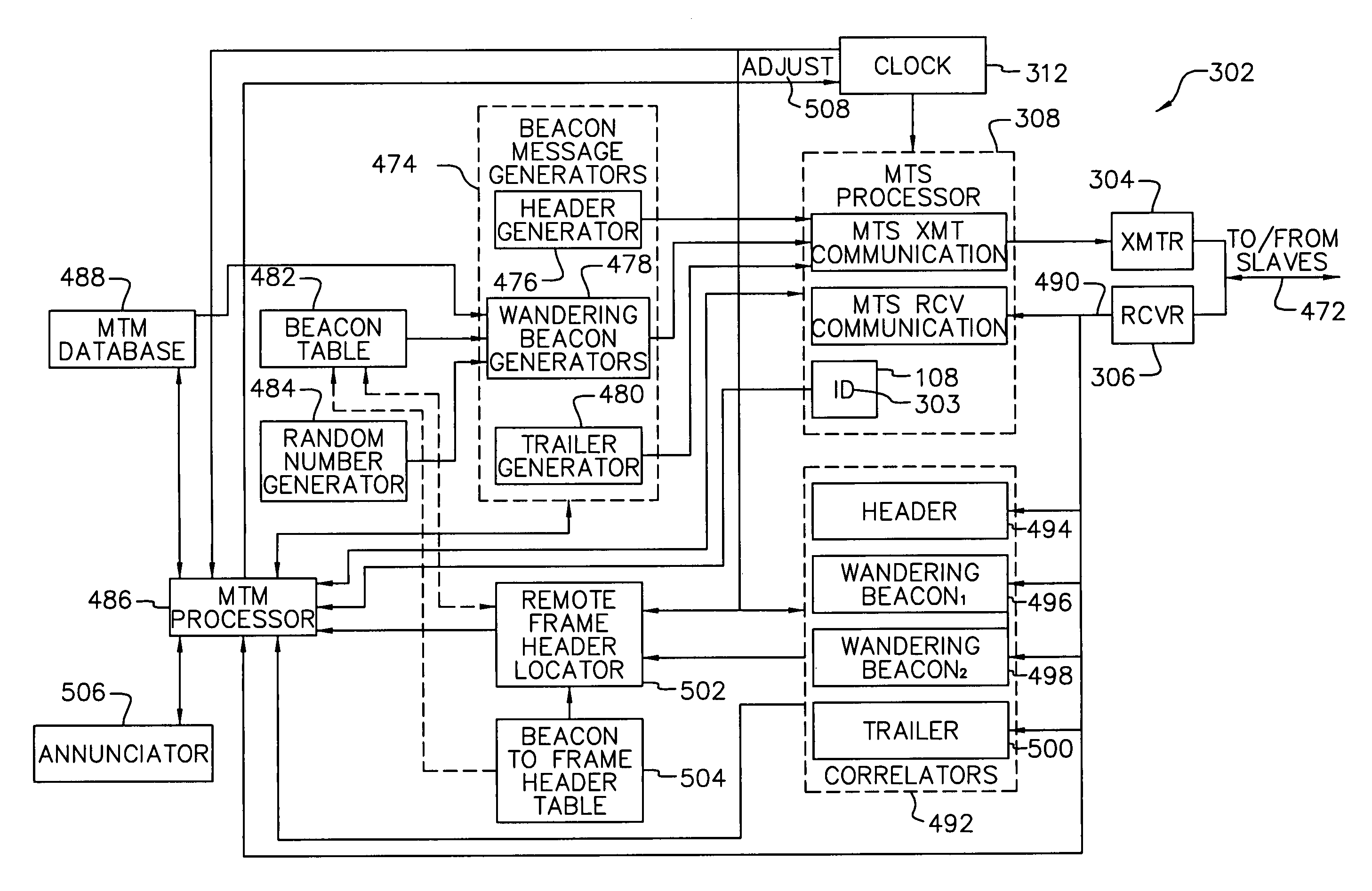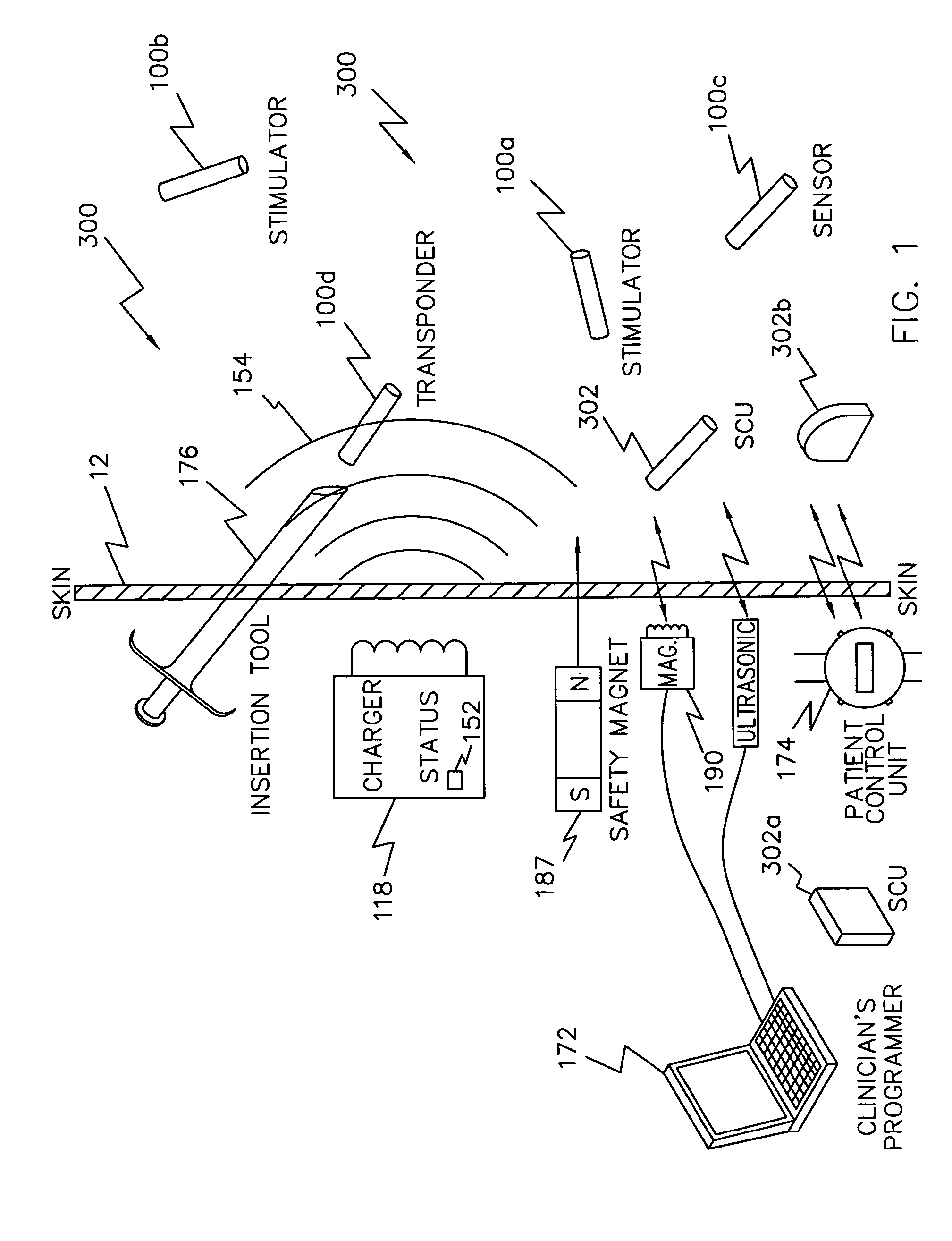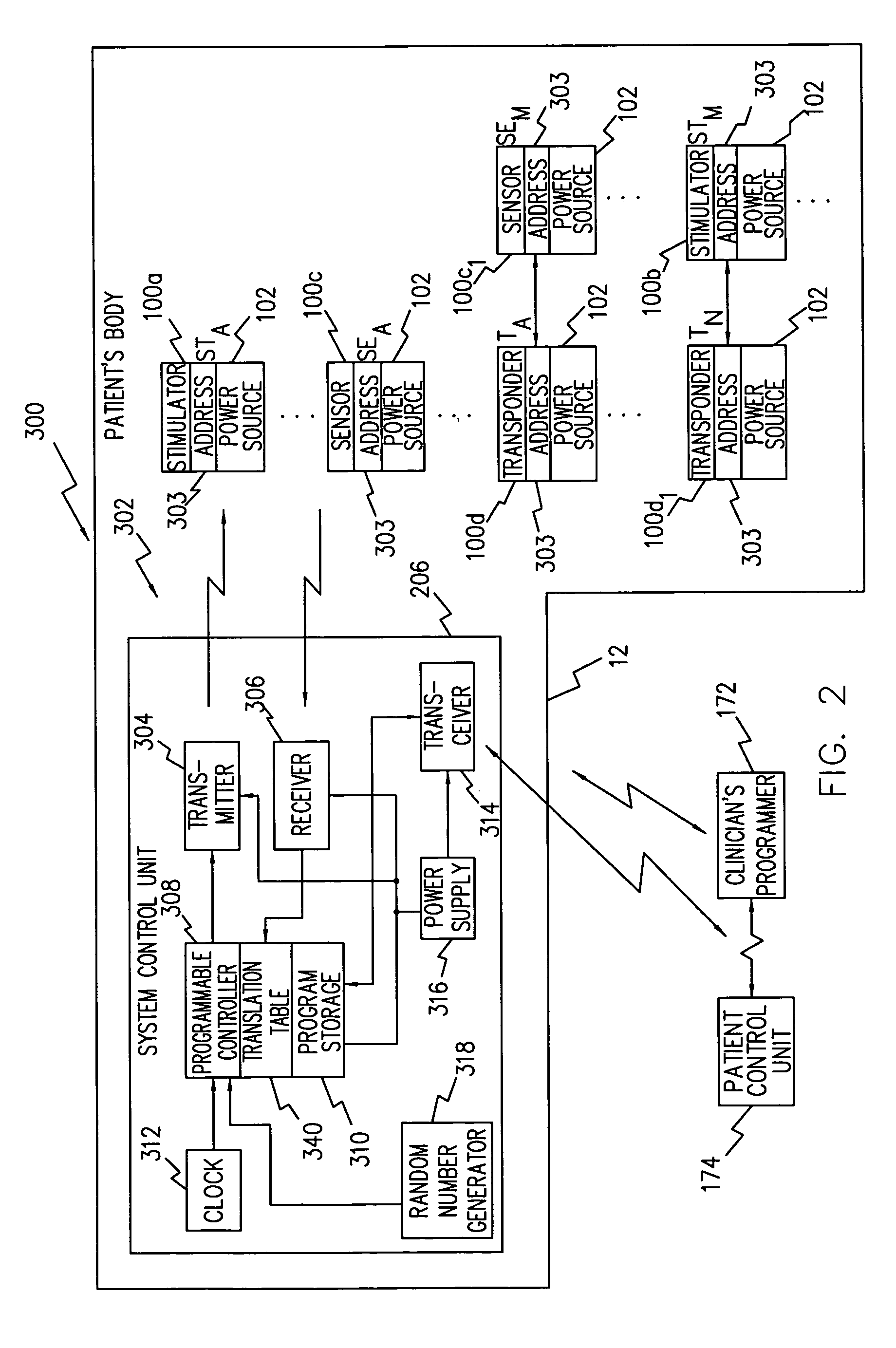System and method for sharing a common communication channel between multiple systems of implantable medical devices
a technology communication channels, applied in the field of implantable medical devices system, can solve the problems of difficulty in receiving individual receivers, one or more devices or systems to perform improperly, and most systems will not be populated to the predefined maximum amount, so as to facilitate multiple systems of communication devices
- Summary
- Abstract
- Description
- Claims
- Application Information
AI Technical Summary
Benefits of technology
Problems solved by technology
Method used
Image
Examples
Embodiment Construction
[0043]The following description is of the best mode presently contemplated for carrying out the invention. This description is not to be taken in a limiting sense, but is made merely for the purpose of describing the general principles of the invention. The scope of the invention should be determined with reference to the claims.
[0044]The present invention is directed to a system and method that facilitates multiple systems of communicating devices, i.e., a master device and one or more associated slave devices, to coexist on a common communication channel having a limited temporal bandwidth while maintaining the required update rate between each master device and its one or more associated slave devices. The system and method of the present invention is particularly useful in a system comprised of a master device (also referred to as a system control unit (SCU)) and one or more slave devices preferably implanted in the patient's body, i.e., within the envelope defined by the patien...
PUM
 Login to View More
Login to View More Abstract
Description
Claims
Application Information
 Login to View More
Login to View More - R&D
- Intellectual Property
- Life Sciences
- Materials
- Tech Scout
- Unparalleled Data Quality
- Higher Quality Content
- 60% Fewer Hallucinations
Browse by: Latest US Patents, China's latest patents, Technical Efficacy Thesaurus, Application Domain, Technology Topic, Popular Technical Reports.
© 2025 PatSnap. All rights reserved.Legal|Privacy policy|Modern Slavery Act Transparency Statement|Sitemap|About US| Contact US: help@patsnap.com



